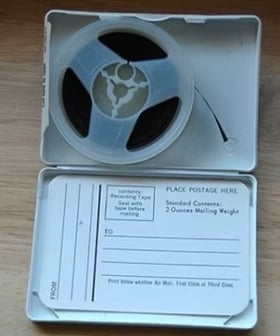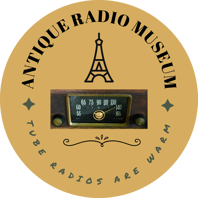RECORD PLAYERS, PHONOGRAPHS, GRAMOPHONES AND TAPE RECORDERS
I have a few phonographs and tape recorders, but at present very few.
How many of you know that the early storage devices for home computers were not hard drives, nor disk dives, but a small portable tape recorder? Some of the early Radio Shack TRS-80 computers used such a device to input and output data.
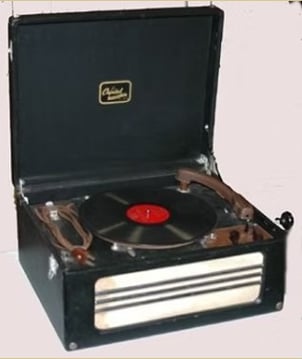

Here is an interesting hybrid phonograph made by Capital Records, Model U-14 from 1939.
These are sometimes referred to as "suitcase" portables because of the design of the case. You can see that this one had a hand crank on the side for the turntable motor. However, inside you learn that the sound amplifier (electronic) can run on batteries or on AC. The designers probably thought that the turntable motor drew too much current for the battery to support for any long period of time.
The amplifier in this set is a 4-tube device using a 50B5, a 35W4, a 1S5 and a 3Q4 tubes.
This machine was capable of playing ONLY 78 RPM records and since the mechanical spring of the turn table motor was not very predictable there was a speed adjustment located right adjacent to the turn table in the lower right. On the lower left of the turn table is a brake (a leather pad on a lever) which was used to stop the rotation when you wanted to put on a new record.
There is also a provision made for the wind-up handle to store inside the case under the AC power cord.
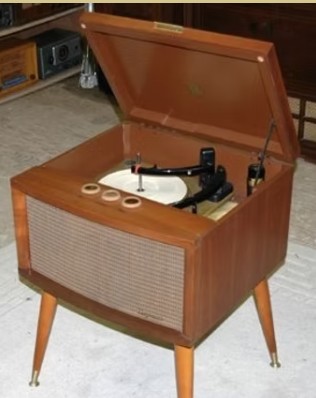

MAGNAVOX STAND-UP PHONOGRAPH
I am sure many of these existed, but this is the first that I ran across. This is a Magnavox Deluxe, model TP-262-H, Style P-226-89, SN 3059400 and the Amplifier is labeled 151-GB. The label says Made in England!
This is a phonograph only, with no radio. The lid cover is a very nice leather-looking material. It is equipped with one of those flip over needle cartridges, one for regular play and one for LP play. I think in its day the regular side was used for 78 RPM records, while the LP side was used for 33 1/3 RPM records. There is even a spindle adaptor for 45 RPM recordings.
This is another item given to me by my anonymous friend to be displayed here. Oh, I think I bought this but didn't pay for it. So is that the same as having it given to me?.....hahaha. Anyhow, thanks friend!
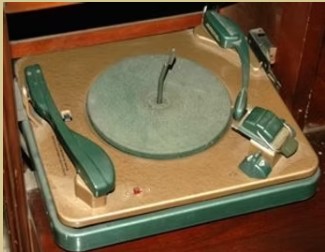

This is the turn table from the Philco 50-1725 Radio/Phono from 1950.
You will note that this turntable has two tone arms on it. The lighter one is used for the LP records, also known as 33 1/3 RPM recordings. The bigger, and heavier, arm on the left is used for the 78 RPM recordings.

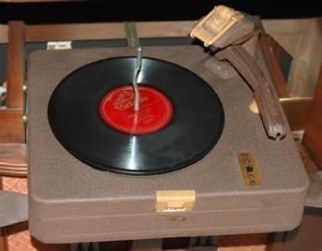
This is the turn table and changer from the Admiral 6C71 Radio/Phono Console from 1950.
On this machine there is only one tone arm and a single needle so it appears it was designed for only 78 RPM records. I have heard about different needles you could install for the LP recordings. The needle is just held in place with a thumb screw at the end of the tone arm (missing on this one).

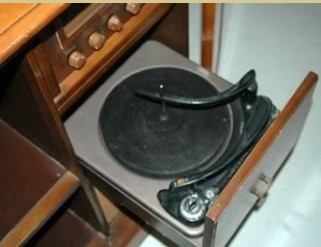
This is the turn table and changer from the Admiral 6C71 Radio/Phono Console from 1950.
Again there is only one tone arm and a really simple changer compared to those above. I suspect that this used the flip over cartridge needle for 78's and 33 1/3 RPM records, but I can't be sure.

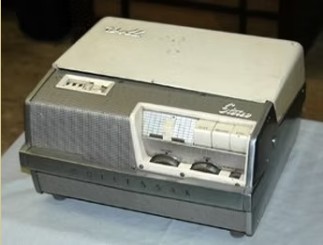
This is a classic old Wollensak reel-to-reel tape recorder that I have had for many years.
This unit is fairly small but it weighs a ton. It has a nice retractable carrying handle that sits across the front (where the Wollensak name is). I now have several of these in my collection. They were very popular.
Note the original Wollensak microphone stored in the cover of the machine. Back in the days before the internet we used this machine to send taped letters back and forth to relatives. I still have some of those tapes from the early 60's
This was such a popular thing to do that tape manufactures, such as 3M, made a small 3 inch reel that came in a box with a place for shipping addresses printed right on the box. I will try to remember to add a picture of one of those boxes.
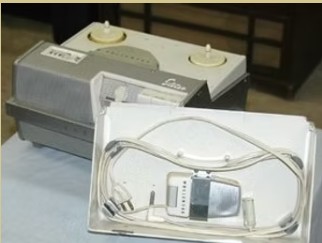

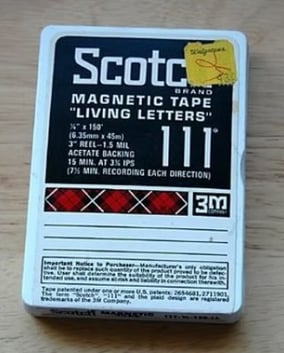

This is what people used to send tape recoded letters back and forth to each other.
Remember, this is probably from the 60's so the price on the yellow label is $0.43, but then this was on sale for $0.29 as written in red across the label. Notice that it says "Living Letters" on the box. At the time it was very popular to send such letters. You could include the entire family on the tape, hear kids laughing (or crying) and so on.
It was a very neat idea and we used these quite a bit.
You would record your voice on the magnetic tape and send it to a friend or relative. That person could then record "over" what you had on the tape and send it back to you.
Inside the plastic package was the mag tape and a mailing label you could use to send this to someone. On the back of the box was a place for the shipping label to fit so they had thought of everything.
